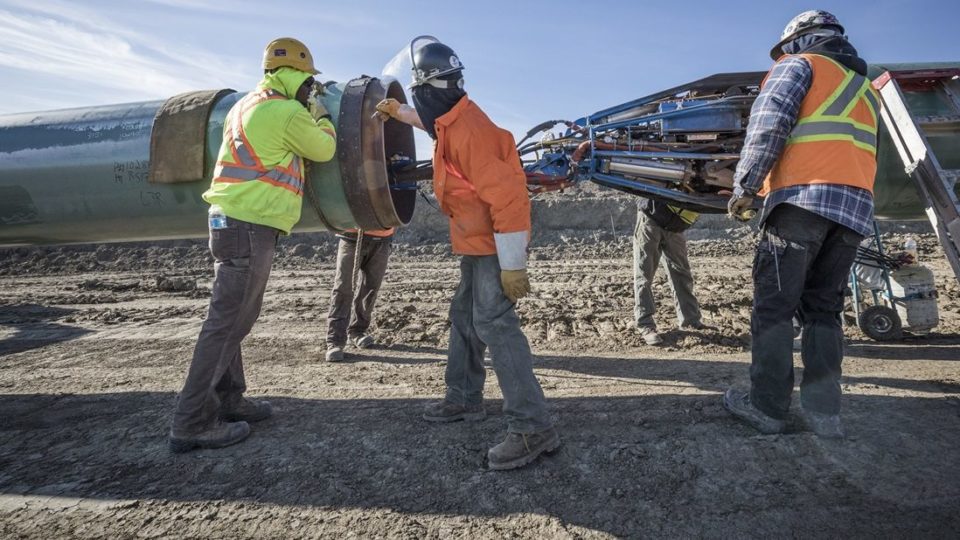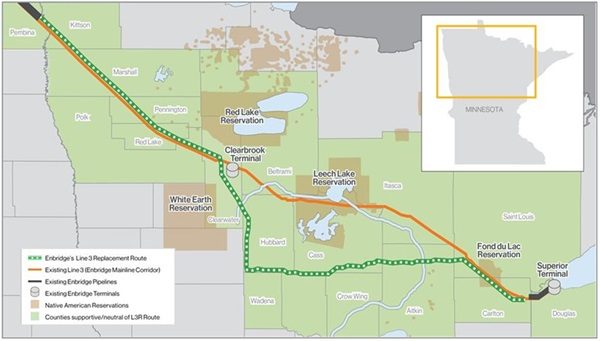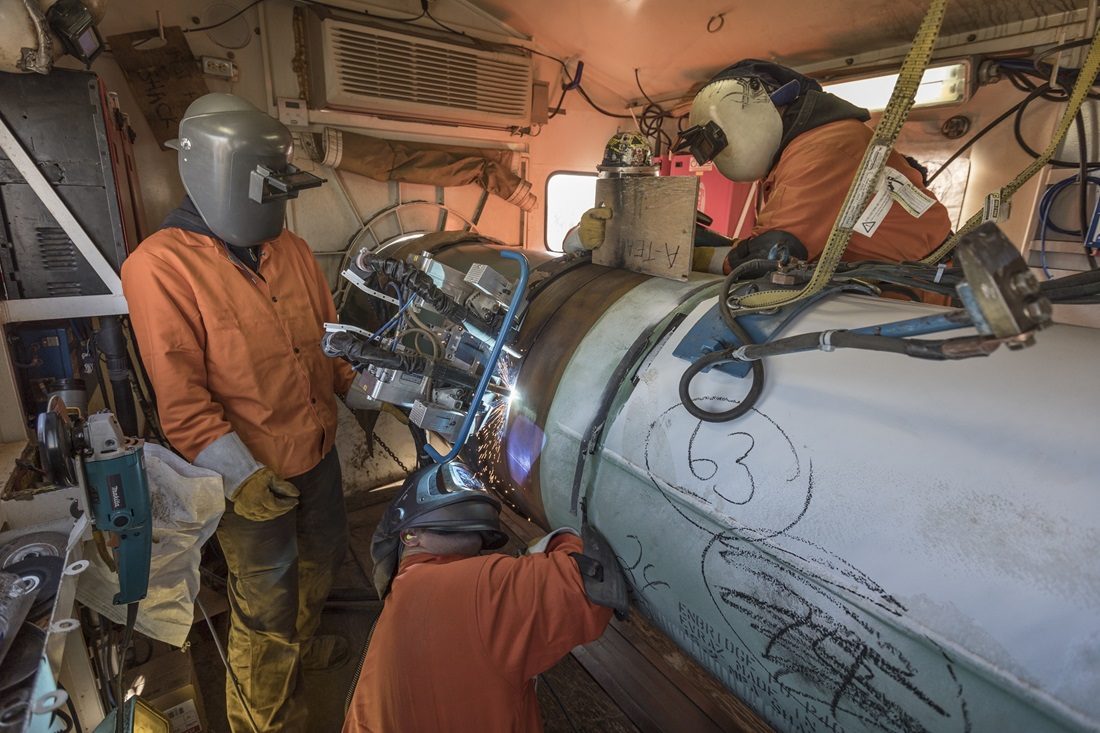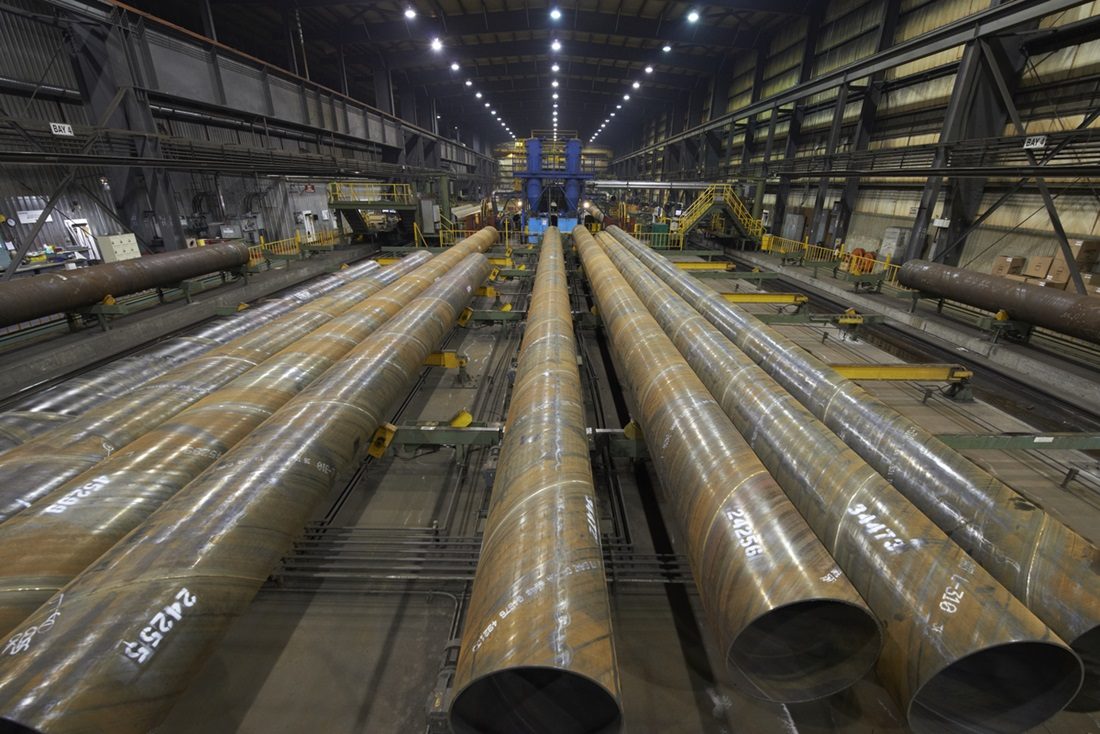The 540-km project will bring jobs, opportunities and safer, more reliable energy to communities in Minnesota and beyond

Despite Minnesota’s conclusion that Line 3 is needed to ensure adequate and reliable oil supply to the region, activist groups continue to protest the project. But it has support across the state – here’s why:
Pipeline Safety, Construction and Deactivation
At its core, the Line 3 Replacement Project is about improving pipeline safety and reliability. Originally brought online in 1968, Line 3 has been operating at reduced capacity since 2008 when Enbridge identified numerous required repairs and voluntarily restricted flows to maintain pipeline integrity.
Using existing utility corridors for more than 98 per cent of the Minnesota route, the company is replacing the existing 34-inch pipeline with new, 36-inch pipeline with thicker steel and advanced coatings. This will provide continued safe operations and protect the environment while allowing Enbridge to increase capacity to satisfy customer demand.
It will also dramatically reduce ongoing disruption to landowners and the environment. Enbridge estimates that without the replacement project, it would need to conduct about 4,000 integrity digs on the existing pipeline right-of-way in the US over the next 15 years.
State regulators with the Minnesota Public Utilities Commission (PUC) found that “a crucial benefit” of replacement is to significantly reduce the risk of an accidental oil spill by replacing the existing Line 3 “with a state-of-the-art pipeline built with stronger materials, new technology, and more effective inspection and testing.”
Careful construction of the 540-kilometre project in Minnesota includes some temporary disturbances to water bodies; activities that the US Army Corps of Engineers found to be compliant with all federal laws and regulations, balancing development with protecting the environment. The US Army Corps of Engineers review process included consultation with 30 Native American tribes.

Once the replacement pipeline is operational, Enbridge is required to deactivate the existing pipeline by cleaning out and disconnecting the system. Landowners have the option to have the pipeline deactivated in place or removed across their property, subject to permitting limitations.
The company will continue to monitor the deactivated pipeline and maintain the right-of-way, and will establish a Decommissioning Trust Fund to meet future abandonment obligations, adding to the company’s existing abandonment trusts.
Enbridge reports that 98 per cent of private landowners along the pipeline right-of-way have signed easements to allow the project to proceed, and it has also signed agreements with the Leech Lake Band of Ojibwe and Fond du Lac Band of Lake Superior Chippewa.
Jobs and Economic Benefits
In its approval of Line 3, the PUC noted the project is positive for Minnesota because it will meet overall state energy needs, generate thousands of construction jobs and induce further employment, and provide tax benefits to local communities.
Enbridge says there are already over 1,000 men and women from the skilled trades working on the project.
“The workforce will ramp up as construction continues, eventually creating over 4,000 family-sustaining, mostly local construction jobs, millions of dollars in local spending and additional tax revenues at a time when Northern Minnesota needs it most,” the company said in early December.

Some of this work will be done by Gordon Construction, a Native American-owned business on the White Earth Indian Reservation in northern Minnesota.
“Enbridge is by far the safest and most meticulous company we have ever worked for,” says vice-president Matt Gordon in a video on the Enbridge website. “They are very respectful, and regardless of the opposition, they are very environmentally friendly and professional. I’m 100 per cent in support of the pipeline.”
Enbridge estimates Line 3 construction will result in about $334 million in payroll to workers (about half to local workers), and a $162-million gain for local economies as non-local workers purchase goods and services such as the use of hotels and restaurants.
The completed project will double the company’s payments of Minnesota property taxes to more than $65 million per year starting in the first full year of service.
Additionally, Enbridge says it will use tons of Minnesota scrap steel for the pipe itself, which is made of 96 per cent recycled metal.
Safely Meeting Energy Demand
Minnesota has no domestic oil production – its two refineries are primarily served by Enbridge pipelines. The state is also along the primary route of Canadian oil imports to refineries in the US, including the Midwest and Gulf of Mexico. Approximately 30 per cent of all US crude oil imports flow through Minnesota, according to research by the state’s House of Representatives.
In approving the Line 3 project, the PUC relied on forecasts showing that oil supply will continue to increase, and that supply will continue to be equal to or less than demand.
Despite the dramatic increase in US oil production in the last decade, imports from Canada have continued to increase, from 1.97 million barrels per day in 2010 to a record high of 4.14 million barrels per day in December 2019, prior to the COVID-19 pandemic.
The PUC found the Line 3 replacement to be the best option to continue reliable oil delivery, stating that the alternative, “transport by truck or rail is much more expensive and comes with greater environmental risk.”
When the replacement project is complete, Line 3 will have capacity to transport up to 760,000 barrels per day, which on a daily basis would otherwise require 10 loaded unit trains of 110 tank cars, or 4,000 tanker truck trips.
Greenhouse Gas Emissions
In its review of the Line 3 project, the PUC considered life-cycle greenhouse gas emissions from oil production in western Canada through pipeline transportation and end-use consumption. The regulator found that most of the emissions related to Line 3 would come from ultimate consumption of the oil and not the pipeline itself.
The PUC recognized the potential impacts of global climate change, “but after carefully reviewing the record concluded that denying the [approval] would not significantly reduce the demand for crude oil and would therefore not significantly reduce climate change impacts.”

The PUC also noted that technological development has substantially reduced the energy intensity of oil sands production in Alberta.
This is an ongoing trend. According to IHS Markit, since 2009 the weighted average emissions intensity of oil sands projects has fallen by 20 per cent, including a bigger than expected decrease of 10 per cent for oil sands mining projects from 2017 to 2018.
According to BMO Capital Markets, several oil sands projects already have carbon footprints that are below the global average per barrel.
Mitigating Impacts
The Line 3 approval includes measures to mitigate environmental impacts, including the Decommissioning Trust Fund to manage future abandonment requirements.
Enbridge must also implement a Neutral Footprint Program to offset the incremental increase in non-renewable energy consumed by the project and replace each tree removed during construction with a new tree on public land.
A Landowner Choice Program, which Enbridge voluntarily proposed, is also in place. This gives individual landowners along the right-of-way the choice of whether the existing Line 3 is deactivated in place or removed across their property, subject to permitting limitations.
Under a “Parental Guaranty,” Enbridge Inc. is ultimately required to pay for environmental damages arising out of construction or operation of the project. This order requires ongoing reporting and spill modeling so that the PUC can ensure the company has sufficient financial resources and insurance to cover a worst-case-scenario spill.
Share This:





 CDN NEWS |
CDN NEWS |  US NEWS
US NEWS 



































COMMENTARY: Alberta’s World-Class Regulator and Regulatory System – Brian Jean, Minister of Energy and Minerals for Alberta